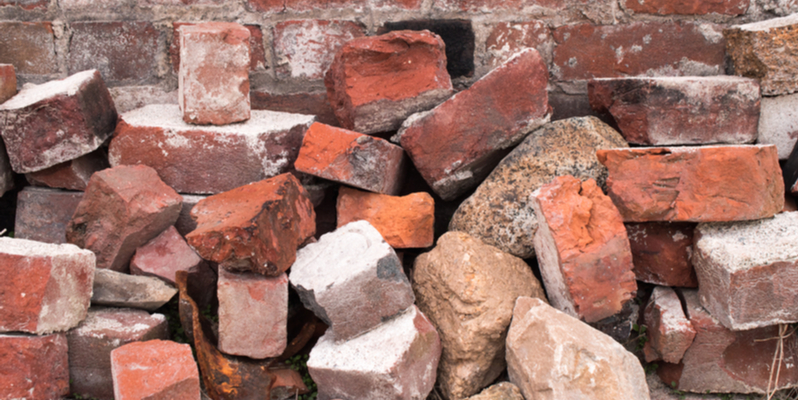Sometimes, using old bricks for new construction in Toronto is a practical decision. This can be due to the fact that you have lots of old bricks, you enjoy the aesthetic quality, or are trying to preserve the historic qualities of a building. As long as bricks are still in good condition, you will generally not have any problems using old bricks for new construction. Below, we will help you determine how to do this.
First Consider the Condition of the Bricks
The first thing that you need to consider is the quality of the bricks you intend to use. Using older bricks that have damaged corners or other parts is generally a bad idea. After all, you can risk the integrity of your new building’s construction simply by using a few bad apple bricks. If the bricks look good, though, you are generally safe to use them for new construction. Bricks that look good on the backside but may not look so good on the front side, can often be turned around and safely used.
5 Factors to Keep in Mind When Using Old Bricks for New Construction in Toronto
Realistically, there are many factors to keep in mind before re-using old bricks for new construction. Don’t worry, though, we are here to help. Below, we will break down each of the most important factors to keep in mind before deciding whether or not to use older bricks for new construction.
1. Old Mortar Needs to Be Removed
Before you even think about re-using old bricks, one of the first things to check is if there is still mortar on the brick. If so, this needs to be removed. Otherwise, you can risk the integrity of your new building. Don’t worry, removing mortar is easy to do with the proper scraper. The hardest part is generally using elbow-grease to do so! If you don’t have the energy for this, consider using something like an electric sander.
2. How the Bricks Look on the Structure
You shouldn’t use older bricks on a structure where they will stand out. This is solely for aesthetic reasons. When you are finally finished with your new structure, you probably want to it look nice. Therefore, be sure to consider the color and size of the bricks that your new structure will have.
3. Where the Old Bricks Will Be Placed
Where you end up installing the old bricks should be considered before starting your work. As a general rule of thumb, older bricks will not be able to hold up as well as newer bricks. With exceptions, of course. However, don’t go out of your way to place older bricks at critical points. Instead, consider placing them in less critical spots such as those near the top of the structure.
4. The Type of Project
Doing something like historical reconstruction almost always requires the use of the same materials that were initially used. Or, if you are doing brand-new home construction, you might just choose to avoid using older bricks altogether since they will only impede on the quality of your new building. Be sure to keep the type of project in mind while determining whether or not to use an old set of bricks you have sitting around.
5. The Expertise of the Bricklayer
An expert bricklayer will be able to make much better use of the bricks that you have than a beginner bricklayer. An expert bricklayer such as the folks over at Turnbull Masonry will be able to handle all sorts of jobs with ease. Most importantly, they will know which older bricks can be used, where they can be used, and how to install them properly.
Need Some Help Refurbishing Older Bricks for a New Job? Give us a Call at Turnbull Masonry!

